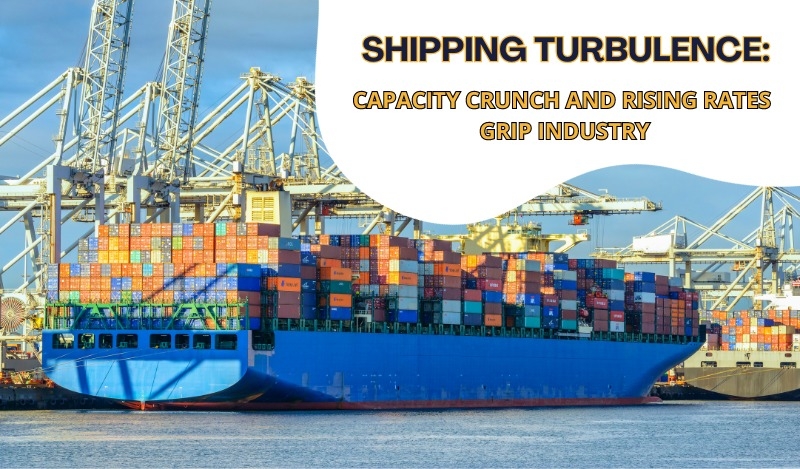News
Shipping Turbulence: Capacity Crunch and Rising Rates Grip Industry

North European container ports stand on the precipice of a potential capacity crunch in early February, as an armada of alliance vessels from Asia, rerouted around Africa, approaches the Channel. Vessels from various loops departing Asia at the end of December now display revised ETAs at North Europe discharge ports in early to mid-February, sparking concerns of 'vessel bunching.' Carriers may adjust port rotations or consolidate operations at fewer hubs to alleviate potential congestion. Vessel ETAs have been delayed by over 10 days, leading to a scramble for arrival slots at hub terminals. While the situation is expected to be challenging, carriers are optimistic, citing manageable utilization levels of 60-70%. However, a watchful eye is kept on Germany, with concerns over potential industrial action impacting intermodal operations.
Collaborating with alliance partners, ocean carriers are working on contingency plans to expedite ship returns to Asia. Westbound voyages from Asia report full bookings until Chinese New Year on February 10, prompting carriers like HMM to deploy extra loaders outside their regular vessel-sharing memberships. Market rates reaching $10,000 per 40ft for prompt shipments from China to North Europe make such ad-hoc tonnage deployments lucrative. Meanwhile, shippers grapple with longer transit times from Asia to Europe due to vessels rerouted around the Cape of Good Hope. Equipment shortages in Asia compound the issue, restricting container releases to large-volume contracts or those willing to pay a premium. Shippers report carriers offering exorbitant rates, exceeding $10,000 per 40ft, for China-North Europe sailings in February.
Xeneta's chief analyst, Peter Sand, advises shippers against relying on low freight rates during disruptions. Carriers may prioritize higher-paying spot cargo, potentially rolling over low-rated contracts. Container spot indices reflect soaring short-term rates, with the WCI North Europe component surging 164% since December. Transpacific and transatlantic rates experience similar spikes, further compounded by impending rate restoration and peak season surcharges. The global supply chain disruption underscores the need for resilience in the maritime industry. Stakeholders navigate a complex landscape, with shippers urged to reassess freight agreements, and carriers strategically optimizing operations amid uncertainties. As the industry grapples with challenges, these developments shape the trajectory of global trade and logistics, emphasizing the importance of adaptability in the face of unforeseen circumstances.